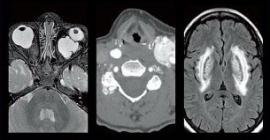What is Neuroradiology
The main objective of Neuroradiology - a diagnosis and treatment of various disorders of the blood vessels of the brain, face and spine, as well as the treatment of functional disorders of the venous outflow.
Neuroradiology today offers a variety of minimally invasive methods treatment of various diseases of the brain, face and spine, which can serve as an alternative to surgery. These methods are useful for stroke, aneurysm or cancer.
Treatment with using the invasive Neuroradiology possible under the following violations:
- Brain aneurysm;
- Venous and arterial malformations;
- Fistulas;
- Carotid and intracranial arteries;
- Opening of clogged arteries in acute stroke;
- Isolation from the blood vessels in preparation for surgery on tumors with blood vessels, when checking on the presence of the functional areas of the brain, as well as when direct injection of alcohol (destroying tissue) in tumors of the spine, face and other organs.
The treatment is carried out mainly by means of intraarterial catheter that is inserted into the body through the inguinal region. A catheter (diameter 2 mm) is delivered through an artery in the neck,out there therethrough in the brain of the patient is administered an even smaller catheter (0.5 mm), through which is carried out the necessary procedure.
In certain cases, treatment can be performed by direct puncture. This applies particularly tumors in the facial area or spine. The catheter is introduced through the vessels by hand, using tiny metallic conductors, and themselves the vessels are a conductor for getting to anywhere in the brain, spine, face or neck.
hide
 Neuroradiology spends diagnosis and treatment of diseases of the nervous system (brain, spinal cord and peripheral nerves), and the meninges using radiological methods.
Neuroradiology spends diagnosis and treatment of diseases of the nervous system (brain, spinal cord and peripheral nerves), and the meninges using radiological methods. 






